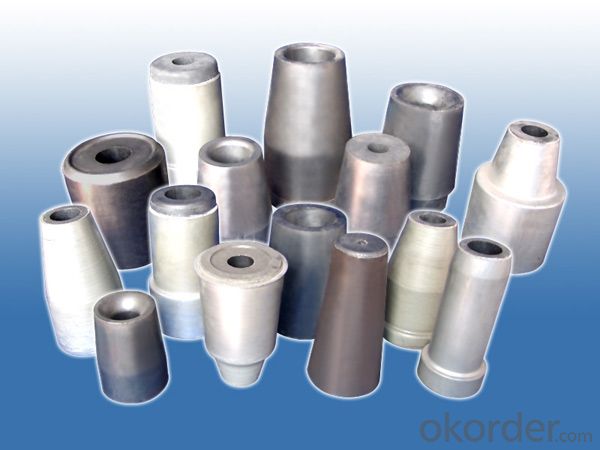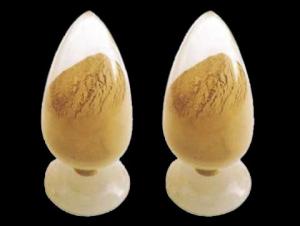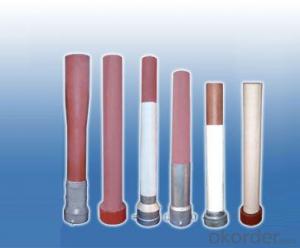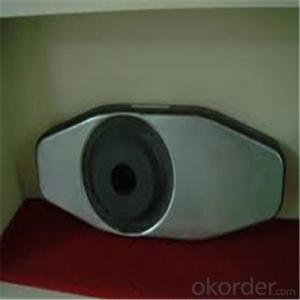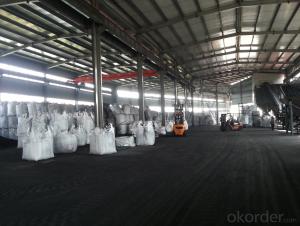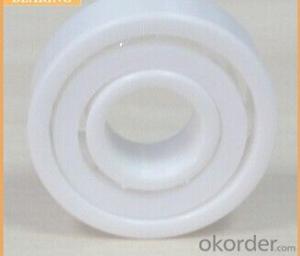Monolithic Refractories Upper & Lower Nozzles for Ladle in Iron and Steel Industry
- Loading Port:
- Shanghai
- Payment Terms:
- TT OR LC
- Min Order Qty:
- 10 set
- Supply Capability:
- 50000 set/month
OKorder Service Pledge
OKorder Financial Service
You Might Also Like
Product Description:
1)High Temperature Burnt Slide Plate
This product adopts tabular alumina, carbonaceous material and zirconia-containing material as main raw materials, adds in high performance antioxidants, uses phenolic resin as binder, formed under high-pressure and burned under high temperature. Mainly used in large and medium-sized ladle.
Physical and chemical properties:
Chemical and Physical Properties | Al-C Slide Gate Plate | Al-Zr-C Slide Gate Plate | ||||||
LQSP-70 | LQSP -75 | LQSP -80 | LQSP -85 | LQSP -86 | LQSP -70 | LQHSP-75 | LQHSP -77 | |
Al2O3,% | 70 | 75 | 80 | 85 | 86 | 70 | 75 | 77 |
C,% | 7 | 7 | 5 | 5 | 4 | 7 | 7 | 7 |
ZrO2,% | - | - | - | - | - | 6 | 6 | 2.5 |
A.P.,% max | 10 | 10 | 10 | 10 | 7 | 10 | 10 | 10 |
B.D.,g/cm3 | 2.8 | 2.9 | 2.9 | 3.0 | 2.95 | 3.00 | 3.05 | 2.90 |
C.C.S., MPa min | 65 | 70 | 100 | 100 | 100 | 110 | 115 | 100 |
2) Low Temperature Burnt Slide Plate
Tabular alumina, zirconia-containing material and spinel as major raw materials, adding in special metal, using phenolic resin as binder, being burned under low temperature during producing process. Mainly used in small and medium-sized ladles.
Physical and chemical properties:
Chemical and Physical Properties | Low Temperature Burnt Slide Gate Plate | ||||
LQLTSP-70 | LQLTSP-75 | LQLTSP-80 | LQLTSP-85 | LQLTSP-86 | |
Al2O3,% min | 70 | 75 | 80 | 85 | 86 |
C,% | ≥5 | ≥5 | ≥5 | ≥4 | 4 |
A.P.,% max | 10 | 10 | 10 | 8 | 7 |
B.D.,g/cm | 2.9 | 2.95 | 3.00 | 3.10 | 2.95 |
C.C.S., MPa ≥ | 90 | 90 | 100 | 120 | 100 |
3) Unburned Slide Plate
Without being burned, tar impregnated and distilled, simple processing. Mainly used in small and medium-sized ladles.
Physical and chemical properties:
Chemical and Physical Properties | Al-C Slide Gate Plate | ||||
LQUSP-70 | LQUSP-75 | LQUSP-80 | LQUSP-85 | LQUSP-86 | |
Al2O3,% | 70 | 75 | 80 | 85 | 86 |
C,% | 7 | 7 | 5 | 5 | 4 |
A.P.,% max | 10 | 10 | 8 | 10 | 7 |
B.D. g/cm3 min | 2.8 | 2.9 | 3.0 | 3.0 | 2.95 |
C.C.S., MPa min | 65 | 70 | 100 | 100 | 100 |
- Q: How do monolithic refractories help in enhancing the durability of iron and steel furnaces?
- Monolithic refractories play a crucial role in enhancing the durability of iron and steel furnaces due to their unique properties and characteristics. These materials are designed to withstand extremely high temperatures and harsh conditions, making them ideal for lining the furnaces. Firstly, monolithic refractories have excellent thermal resistance, meaning they can withstand extreme heat without losing their structural integrity. Iron and steel furnaces operate at incredibly high temperatures, sometimes exceeding 2,000 degrees Celsius. Regular bricks or other materials would not be able to withstand such temperatures, leading to frequent repairs and maintenance. Monolithic refractories, on the other hand, can handle these extreme temperatures without deteriorating, thus enhancing the durability of the furnaces. Secondly, monolithic refractories have high resistance to chemical attack. In iron and steel production, the materials being processed often contain various impurities and aggressive chemicals. These substances can react with the furnace lining and cause corrosion or erosion over time. However, monolithic refractories have a high resistance to chemical attack, ensuring that the lining remains intact and durable even in the presence of corrosive elements. Furthermore, monolithic refractories have excellent mechanical strength and abrasion resistance. Iron and steel furnaces experience mechanical stress and abrasion due to the movement of raw materials, the stirring of molten metal, and the tapping of the furnace. The lining needs to withstand this constant wear and tear without breaking or cracking. Monolithic refractories have superior mechanical strength and can resist abrasion, ensuring that the furnace remains durable and functional for a longer period. Additionally, monolithic refractories offer exceptional thermal shock resistance. The lining of iron and steel furnaces is subjected to rapid temperature changes during various stages of production. These temperature fluctuations can cause thermal stress and lead to cracking or spalling of the lining. However, monolithic refractories have low thermal conductivity and can withstand thermal shock, preventing any damage to the furnace lining and enhancing its durability. In summary, monolithic refractories help enhance the durability of iron and steel furnaces by providing excellent thermal resistance, high resistance to chemical attack, superior mechanical strength and abrasion resistance, as well as exceptional thermal shock resistance. These properties ensure that the furnace lining remains intact, withstands extreme temperatures, and resists the corrosive and abrasive nature of the materials being processed, ultimately prolonging the life of the furnace and reducing the need for frequent repairs or replacements.
- Q: How do monolithic refractories contribute to the reduction of heat loss in iron and steel furnaces?
- Monolithic refractories play a crucial role in reducing heat loss in iron and steel furnaces by providing excellent insulation and maintaining a high level of thermal efficiency. These materials are designed to withstand extreme temperatures and are applied as a single, seamless lining, eliminating joints and gaps that could allow heat to escape. By creating a barrier between the hot furnace and the surrounding environment, monolithic refractories effectively minimize heat loss, ensuring optimal energy utilization and cost savings in the iron and steel industry.
- Q: How do monolithic refractories perform in reheating furnace applications?
- Due to their exceptional thermal stability, strength, and resistance to thermal shock, monolithic refractories are highly effective in reheating furnace applications. These refractories are specifically designed to withstand the harsh operating conditions commonly found in reheating furnaces, including high temperatures and rapid temperature changes. One major advantage of using monolithic refractories in reheating furnace applications is their ability to provide a seamless lining. Unlike traditional brick refractories that require extensive installation and joints, monolithic refractories can be easily applied as a single, homogeneous layer. This eliminates the risk of thermal stress and cracking at joints, ensuring a more reliable and durable lining. Furthermore, monolithic refractories offer excellent thermal insulation properties, which help conserve energy and reduce heat loss in the reheating furnace. This not only improves overall furnace efficiency but also reduces operational costs. In addition to their insulation properties, monolithic refractories exhibit high mechanical strength, allowing them to withstand the mechanical stress and abrasion caused by the movement of the furnace charge. They also have good resistance to chemical attack from gases, slags, and molten metals commonly encountered in reheating furnace operations. Another advantage of monolithic refractories is their ease of repair and patching, minimizing downtime and ensuring continuous furnace operation. They can be easily shaped and molded to fit various furnace geometries, making them highly versatile and adaptable to different reheating furnace designs. In summary, monolithic refractories offer exceptional performance in reheating furnace applications by providing superior thermal stability, strength, and resistance to thermal shock. Their seamless lining, thermal insulation properties, and resistance to mechanical and chemical stress make them an ideal choice for ensuring reliable and efficient furnace operation.
- Q: What are the factors influencing the choice of monolithic refractories for different furnace types?
- There are several factors that influence the choice of monolithic refractories for different furnace types. Firstly, the operating temperature of the furnace is a crucial factor as different monolithic refractories have different temperature resistance levels. Secondly, the type of material being processed in the furnace is important as certain materials may require specific refractories to withstand their corrosive or abrasive nature. Thirdly, the furnace design and its heating method also play a role in determining the suitable refractory material. Additionally, the thermal conductivity, thermal shock resistance, and mechanical strength of the refractory are considered to ensure optimal performance and durability. Finally, cost, availability, and installation requirements are factors that can influence the choice of monolithic refractories for different furnace types.
- Q: How do monolithic refractories resist thermal shock in the iron and steel industry?
- Monolithic refractories in the iron and steel industry resist thermal shock primarily due to their ability to absorb and distribute thermal stress. These refractories are composed of a single, continuous structure, eliminating the weaknesses inherent in jointed or layered materials. Their dense and homogeneous structure allows for efficient heat transfer and expansion, minimizing the risk of cracking or spalling caused by sudden temperature fluctuations. Additionally, monolithic refractories possess high thermal conductivity, which aids in dissipating heat and preventing localized hotspots. Overall, their resilience to thermal shock makes them ideal for withstanding the extreme conditions of the iron and steel manufacturing processes.
- Q: How do monolithic refractories improve the efficiency of ladle and tundish preheaters?
- Monolithic refractories improve the efficiency of ladle and tundish preheaters by providing excellent insulation, high thermal conductivity, and resistance to thermal shock. These properties allow for better heat retention, reduced heat loss, and quicker and more uniform heating of the ladle and tundish, ultimately improving the overall efficiency of the preheating process.
- Q: What are the main factors affecting the erosion resistance of monolithic refractories?
- Several key factors influence the erosion resistance of monolithic refractories. These factors encompass the chemical composition of the refractory material, the microstructure of the material, the temperature and environment in which it is utilized, and the mechanical properties of the material. The erosion resistance of monolithic refractories heavily relies on the chemical composition. The inclusion of specific chemical elements and compounds can enhance the refractory's resistance to erosion, while others may render it more susceptible. For instance, the addition of alumina (Al2O3) to the refractory composition can augment its erosion resistance by forming a protective layer on the surface. Conversely, the presence of impurities or excessive amounts of certain elements can weaken the refractory and heighten its susceptibility to erosion. The microstructure of the monolithic refractory is another critical factor affecting erosion resistance. The microstructure denotes the arrangement and distribution of particles within the refractory. A well-structured microstructure with a uniform particle distribution can provide superior erosion resistance as it ensures an even distribution of load when exposed to erosive forces. Conversely, a poorly structured microstructure with particle clusters or weak bonding may result in localized erosion and failure. Erosion resistance is significantly influenced by the temperature and environment in which the refractory is employed. High temperatures can induce thermal stresses, chemical reactions, and phase changes in the refractory material, all of which impact its erosion resistance. Additionally, the presence of corrosive gases, liquids, or slags can expedite erosion by promoting chemical reactions or attacking the refractory material, leading to its deterioration. Lastly, the mechanical properties of the monolithic refractory, including strength, hardness, and toughness, contribute to erosion resistance. A refractory with higher mechanical strength and hardness can withstand erosive forces more effectively than a weaker material. Similarly, increased toughness aids in the refractory's resistance to cracking or spalling when subjected to impact or thermal shock, reducing its vulnerability to erosion. To summarize, the erosion resistance of monolithic refractories is influenced by the chemical composition, microstructure, temperature and environment, and mechanical properties of the material. Understanding and optimizing these factors can facilitate the development of refractories with enhanced erosion resistance for diverse industrial applications.
- Q: How do monolithic refractories improve the performance of iron and steel furnaces?
- Monolithic refractories play a crucial role in enhancing the performance of iron and steel furnaces through various means. Firstly, these refractories offer exceptional thermal insulation, which helps maintain a stable and high temperature within the furnace. This is of utmost importance as the production of iron and steel necessitates extremely high temperatures for efficient melting and refining processes. Secondly, monolithic refractories possess remarkable resistance to thermal shock and can endure rapid temperature fluctuations without cracking or spalling. This is particularly significant in iron and steel furnaces where temperature fluctuations can be substantial during operations. By withstanding thermal shock, these refractories ensure the durability of the furnace lining, thereby reducing the need for maintenance and minimizing downtime. Moreover, monolithic refractories display excellent resistance to chemical attacks caused by the molten metal and slag in the furnace. The production of iron and steel involves the use of various chemical agents that can corrode and erode the furnace lining. Monolithic refractories offer superior resistance to these chemical attacks, preserving the integrity of the furnace lining and preventing contamination of the metal being produced. Additionally, monolithic refractories possess exceptional mechanical strength and abrasion resistance. This is crucial as they are subjected to mechanical stresses and wear resulting from the movement of materials inside the furnace, such as charging and tapping operations. The high mechanical strength and abrasion resistance of these refractories ensure their durability and prolong their service life in iron and steel furnaces. In conclusion, monolithic refractories enhance the performance of iron and steel furnaces by providing superior thermal insulation, resistance to thermal shock and chemical attacks, as well as high mechanical strength and abrasion resistance. These properties contribute to the efficient and reliable operation of the furnace, resulting in increased productivity, reduced maintenance costs, and improved product quality.
- Q: How are monolithic refractories installed and repaired in iron and steel production facilities?
- Monolithic refractories play a crucial role in iron and steel production facilities by offering insulation and protection against high temperatures, chemical corrosion, and mechanical wear. To install and repair these refractories, careful planning, expertise, and adherence to safety protocols are necessary. To begin installation, the surface must be prepared by eliminating loose material and cleaning the area thoroughly. This step guarantees proper adhesion of the refractory material and may also involve roughening or texturing the surface for better bonding. Next, a workable consistency is achieved by mixing the monolithic refractory material with water or a binder. The material is then applied to the prepared surface using techniques like casting, gunning, ramming, or troweling. The choice of application method depends on factors such as the type of refractory material, repair area, and desired outcome. During installation, it is vital to carefully follow the manufacturer's instructions regarding mixing ratios, curing times, and drying temperatures. Improper installation can result in reduced refractory performance, premature failure, and safety hazards. Repairing monolithic refractories in iron and steel production facilities is an ongoing process due to the harsh operating conditions and mechanical stresses they endure. It is crucial to promptly address any signs of damage or wear to prevent further deterioration. The first step in the repair process is to assess the extent of the damage. This can be achieved through visual inspection, thermal imaging, or non-destructive testing techniques. Once the damage is identified, the appropriate repair method can be determined. Minor repairs can often be accomplished using patching materials that have a composition similar to the original refractory. These materials are mixed with water or a binder to form a paste, which is then applied to the damaged area and allowed to cure. For more extensive repairs, the damaged refractory material may need to be completely removed using mechanical methods like chipping, grinding, or cutting. After removing the damaged material, the surface is prepared as mentioned earlier, and new refractory material is installed using the appropriate application method. It is important to note that the repair process should be carried out by trained personnel with expertise in refractory installation and repair. Safety precautions, such as wearing protective clothing, using proper tools, and following established procedures, should always be observed. In conclusion, the installation and repair of monolithic refractories in iron and steel production facilities necessitate careful planning, adherence to manufacturer's instructions, and expertise in refractory materials. By following proper procedures and promptly addressing any damage, these facilities can ensure the longevity and efficiency of their refractory linings, ultimately contributing to the smooth operation of their production processes.
- Q: What are the specific requirements of monolithic refractories for continuous casting applications?
- The specific requirements of monolithic refractories for continuous casting applications include high thermal shock resistance, excellent erosion resistance, good thermal conductivity, low shrinkage, and high refractoriness. These refractories must also have good flowability and workability to ensure easy installation and maintenance. Additionally, they should have a high degree of chemical stability to withstand the harsh conditions of molten metal and slag in continuous casting processes.
Send your message to us
Monolithic Refractories Upper & Lower Nozzles for Ladle in Iron and Steel Industry
- Loading Port:
- Shanghai
- Payment Terms:
- TT OR LC
- Min Order Qty:
- 10 set
- Supply Capability:
- 50000 set/month
OKorder Service Pledge
OKorder Financial Service
Similar products
Hot products
Hot Searches
Related keywords


